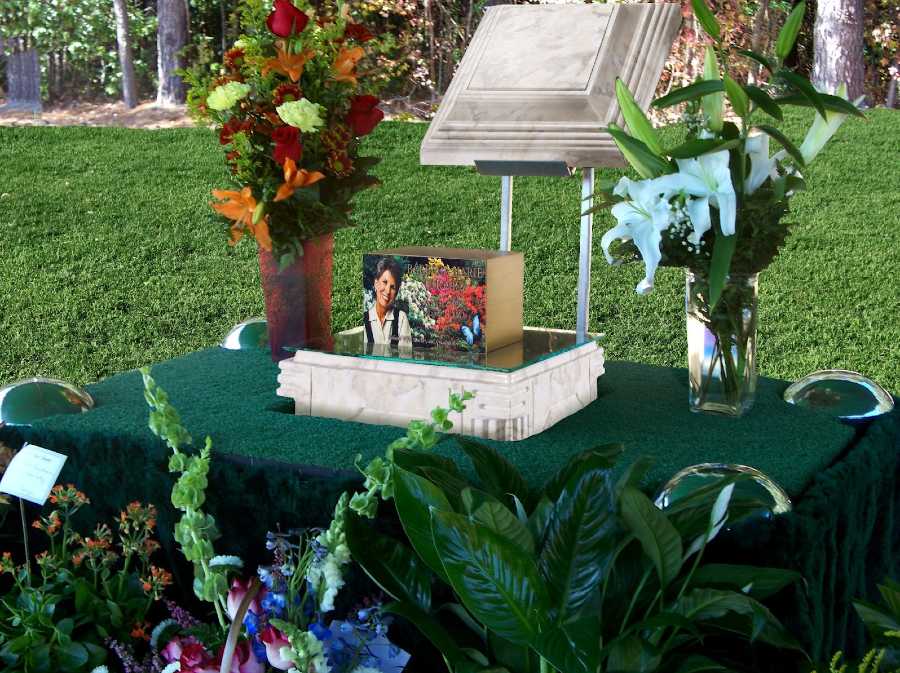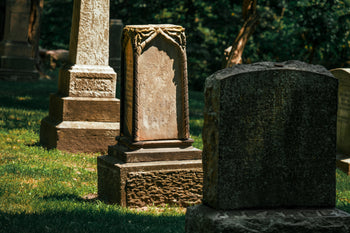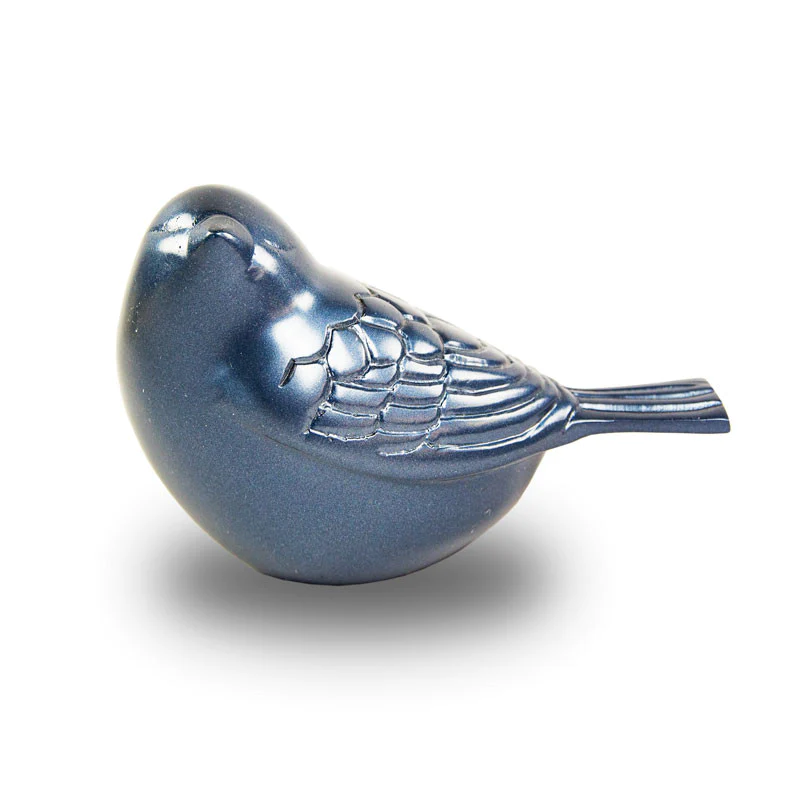

Are you looking for guidance on burying an urn and unsure of the ideal depth? Making the decision to bury a loved one's cremains is deeply personal and finding the right depth is vital for many reasons. In this article, we will explore the factors to consider when determining the ideal depth to bury an urn. One of the primary considerations is the type of urn being used. The material and size of the urn can affect the depth needed to ensure proper burial and memorialization. Additionally, local regulations and cemetery guidelines play a crucial role in determining the required depth. It is essential to familiarize yourself with these regulations to avoid any potential fines or legal issues. Another significant factor to consider is the environment in which the urn will be buried. Soil conditions, drainage, and climate can impact the depth required for stability and preservation. Understanding these environmental factors will help you ensure a lasting tribute to your loved one. In conclusion, determining the ideal depth to bury an urn involves considering various factors such as the type of urn, local regulations, and environmental conditions. By taking these factors into account, you can create a meaningful and lasting memorial for your loved one.
What is the ideal depth to bury an urn?
When burying an urn, it is crucial to determine the ideal depth to ensure the stability and preservation of the memorial. While there is no one-size-fits-all answer, several factors come into play when deciding on the depth. The type of urn, local regulations, environmental conditions, and personal preferences all play a role in determining the ideal depth.
Factors to consider when determining the ideal depth
One of the primary considerations when determining the ideal depth to bury an urn is the type of urn being used. Urns come in various sizes, materials, and shapes. The material of the urn can affect its durability and decomposition rate over time. For instance, biodegradable urns may require a shallower burial depth compared to more durable materials like metal or stone. It is essential to consider the urn's characteristics to ensure its longevity and preservation.
Local regulations and cemetery guidelines also play a crucial role in determining the depth needed for burial. Different regions and cemeteries may have specific requirements and restrictions regarding the depth of burial. It is important to familiarize yourself with these regulations to avoid any potential fines or legal issues. Contacting the local authorities or cemetery administration can provide you with the necessary information to abide by these regulations.
Regulations and legal requirements for burying an urn
When burying an urn, it is essential to adhere to any regulations and legal requirements in your area. These regulations may vary depending on your location and the cemetery or burial site where the urn will be interred. Some common regulations include the depth of burial, distance from other gravesites, and specific procedures for interment. Failing to comply with these regulations can result in legal consequences or complications in the future. Therefore, it is crucial to research and understand the specific guidelines in your area before proceeding with the burial.
The importance of choosing the right burial site for an urn
Selecting the right burial site for an urn is a deeply personal decision. It is important to choose a location that holds significance and provides a peaceful and respectful resting place for your loved one. When considering the burial site, factors such as accessibility, proximity to loved ones, and the overall atmosphere of the location should be taken into account. Additionally, it is important to ensure that the chosen site complies with any local regulations and cemetery guidelines regarding the burial of urns.
How to prepare the burial site for an urn
Before burying an urn, it is essential to properly prepare the burial site. Start by clearing the area of any debris or vegetation that may interfere with the burial process. Ensure that the soil is well-drained to prevent moisture buildup and potential damage to the urn. It is also recommended to mark the burial site with a temporary marker or flag to facilitate easy identification in the future. Taking these steps will help create a suitable environment for the burial and ensure the longevity of the memorial.
Steps to properly bury an urn at the ideal depth
Once the burial site is prepared, it is time to proceed with the burial process. Begin by digging a hole that is deep enough to accommodate the urn and meet the required depth based on the factors discussed earlier. The hole should be wide enough to comfortably fit the urn and allow for any additional items, such as personal mementos or keepsakes, if desired. Carefully lower the urn into the hole, ensuring that it is placed securely and upright. Backfill the hole with soil, ensuring that it is adequately compacted to provide stability. Finally, tamp down the soil and level the ground, creating a smooth surface for the memorial.
Alternative options for urn placement, such as above-ground memorials
While traditional burial is a common choice, there are alternative options for urn placement that may better suit individual preferences or circumstances. One such option is an above-ground memorial, where the urn is placed in a designated structure or niche. Above-ground memorials provide easier accessibility for visitation and maintenance. They are also suitable for individuals who may later decide to relocate the urn or transfer it to another memorial site. Researching the various options available can help you make an informed decision that best honors the memory of your loved one.
Maintenance and care of the burial site
Once the urn is buried, it is important to regularly maintain and care for the burial site. This includes keeping the area clean and free from debris, ensuring the marker or flag is visible and intact, and addressing any potential issues that may arise, such as soil erosion or damage to the marker. Regular visits to the burial site allow for reflection, remembrance, and the opportunity to pay respects. Additionally, staying in touch with the cemetery administration can provide valuable guidance on the long-term care and maintenance of the burial site.
Cultural and religious considerations for burying an urn
Cultural and religious beliefs often play a significant role in the decision-making process when it comes to burying an urn. Different cultures and religions may have specific rituals, traditions, or customs associated with the burial of cremains. It is important to respect and honor these beliefs while determining the ideal depth to bury an urn. Consulting with religious leaders or cultural experts can provide valuable insight into the appropriate rituals and practices to follow.
Conclusion: Honoring the memory of a loved one through proper urn burial
In conclusion, determining the ideal depth to bury an urn involves considering various factors such as the type of urn, local regulations, and environmental conditions. By taking these factors into account, you can create a meaningful and lasting memorial for your loved one. Remember to research and comply with any regulations or legal requirements in your area, choose the right burial site, and properly prepare and maintain the burial site. Cultural and religious considerations should also be respected to ensure a fitting tribute to your loved one. Through proper urn burial, you can honor their memory and create a peaceful resting place for them.
FAQs
What are the shipping options for my memorial?
Oaktree offers free nationwide shipping on all urns and cremation jewelry items, with delivery typically taking 2-5 business days, including processing time. Need it sooner? Expedited shipping (overnight or 2-day) is available at checkout for an additional cost, and we will also prioritize processing for faster delivery. If you need international shipping, please contact us first to confirm availability and rates.
How long will it take for my engraved item to arrive?
Engraved urns and cremation necklaces require an additional 1-3 business days for personalization before shipping. If you need faster delivery, please contact us—we’ll do our best to expedite processing and accommodate your timeline. Expedited shipping options are also available at checkout to ensure your memorial arrives as soon as possible.
What do I do if I never received my order?
If your order hasn’t arrived within 10 business days, please contact us so we can track your shipment and resolve any issues. We’ll ensure your memorial reaches you as soon as possible.
What do I do if I received a defective order?
If your order arrives damaged or defective, contact us right away. We take pride in our high-quality craftsmanship and will work quickly to replace or repair your item at no additional cost.
Can I return my urn or cremation necklace? What is your return policy?
Oaktree offers a 100-day return and exchange policy for non-engraved items. Due to personalization, engraved urns are final sale and cannot be returned. For full details on how to start a return or exchange, visit our Returns & Exchanges page.
How do I make changes to an urn I’ve already ordered?
If you need to modify an order, contact us as soon as possible. If your urn is already engraved, we may not be able to make changes, but we’ll do our best to accommodate your request before processing.
How are your urns made? Where do the materials come from?
Oaktree’s urns are handcrafted in the USA and Europe using sustainable, locally sourced materials. Our artisans ensure each piece is beautifully designed and built to honor your loved one’s memory with care.
How do I choose the right urn size?
Each product page includes detailed dimensions, weight capacity, and cubic inches to help you select the right urn. As a general guide, 1 cubic inch holds 1 pound of pre-cremation weight. If you need help choosing, feel free to contact us.
Some urns are marked as “sold out.” When will they be available?
Our handmade urns may take a few weeks to restock. If you’re interested in a specific style, contact us for an estimated restock date, and we’ll notify you when it’s available.
Does Oaktree place the ashes into my urn?
Yes, we offer an optional ash transfer service for an additional fee. If you’d like us to handle this process, please contact us when placing your order. You’ll need to mail the ashes to us, and we’ll carefully transfer them into your selected urn.
How do I transfer ashes into my urn?
Cremated remains typically arrive in a sealed plastic bag inside a plastic container. To transfer them, simply place the sealed bag inside your urn. If needed, use a funnel for precise placement. If you have any concerns, our team is happy to assist.
How do I order an engraved urn?
To personalize your urn, select “Yes” under “Would you like your item engraved?” on the product page. If you’d like a custom design beyond standard engraving, contact us and we’ll explore options to create a unique tribute.
Can my urn be shipped directly to a funeral home?
Yes! During checkout, you can enter the funeral home’s address for direct shipping.
Can I customize my urn beyond engraving?
Yes! In addition to engraving, we offer custom design services, including unique finishes, symbols, or artwork. If you’d like to personalize your urn beyond standard options, contact us to discuss customization possibilities.
What materials are Oaktree urns made from?
Our urns are crafted from premium materials such as wood, ceramic, marble, metal, and biodegradable materials. We focus on sustainable sourcing and high-quality craftsmanship to create lasting memorials.
Do you offer keepsake urns or mini urns?
Yes, we offer keepsake urns and mini urns, which are smaller versions designed for sharing ashes among family members or keeping a small portion as a personal tribute.
Can I pre-order an urn for future use?
Absolutely! Many customers choose to pre-order an urn in advance. This ensures availability and allows for customization without time constraints. Contact us to arrange a pre-order.
Do you offer pet urns?
Yes, we provide a range of pet memorial urns designed to honor beloved pets. These are available in different materials and sizes to suit dogs, cats, and other pets.
How do I clean and maintain my urn?
Urns require gentle care to maintain their beauty. Use a soft cloth and mild cleaner for metal or ceramic urns. Avoid direct sunlight and moisture to preserve wood urns. Contact us for specific care instructions based on your urn’s material.
Can I travel with an urn? Are they TSA-approved?
Most Oaktree urns are TSA-compliant, making them safe for air travel. Choose a non-metal urn to ensure easy screening. We recommend carrying the urn in your carry-on bag and bringing the cremation certificate from the funeral home.
How do I track my order?
Once your order ships, we’ll send you a tracking number via email. You can use this to monitor the shipment status. If you don’t receive tracking details, contact us for assistance.
How do I contact Oaktree if my question isn’t answered here?
We’re happy to assist! Visit our Contact Us page to reach us via email, chat, or phone. Our compassionate team is ready to help.







